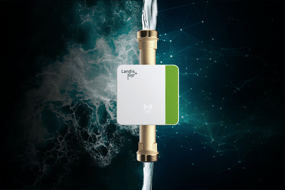 Landis+Gyr is working with Nordic grid operators to deploy smart meters and smart grid technologies to enhance power distribution quality.
Landis+Gyr is working with Nordic grid operators to deploy smart meters and smart grid technologies to enhance power distribution quality.
Power distribution quality is typically measured in terms of the duration and the frequency of outages, using System Average Interruption Duration Index (SAIDI) and System Average Interruption Frequency Index (SAIFI). Over the course of a year SAIDI indicates the average duration of outage while SAIFI quantifies the average number of interruptions, for each customer.
Ageing network infrastructure, increased deployment of renewables and potential integration of e-vehicles are some of the challenges that are driving utilities to increase grid visibility and secure its stability. In addition, recent harsh winters that left parts of the low voltage (LV) distribution network without power for substantial periods have led regulators in the Nordic countries to adopt SAIDI and SAIFI criteria to diligently monitor power distribution quality in their markets. Some of these countries have also implemented regulations that set out requirements for Distribution System Operators (DSO) to financially compensate their customers in case of longer power cuts.
However compensation, which is part of a reactive approach to addressing grid reliability, can become very costly. In Finland 3.4 million customers are connected to the grid. As an example, during the 2011 winter just over 1% of customers were without power for over 120 hours, with each paid, on average, €98 by DSOs to compensate.
For the last year and a half, Landis+Gyr has been working with utilities in Finland, Norway and Sweden, on projects to show how smart meter and smart grid technologies can be deployed to detect and minimize outages, to create ‘self-healing’ solutions, through automation of the LV network.
In addition to automating the process of meter reading and billing, smart meters include functionality that enables them to act as nodes at the ends of the network, registering when power to the customer drops off and relaying this information to the utility provider. DSOs can nowadays remotely check if end-customers are connected to the network or not. Smart meters ensure that when engineers are sent out to correct faults in the LV network, the issue is resolved for every customer.
The visibility that DSOs have over their networks is further enhanced with smart grid technology at the medium voltage (MV) transformer station level. Network digitalization not only localizes and minimizes the impact of the fault – reducing the number of customers affected – but also helps to locate where on the cable the problem is, improving safety of engineers and saving maintenance time.
Related content






